Painting wrought iron is an excellent way to enhance its appearance and prolong its durability. Whether it is used for furniture, gates, or decorative pieces, wrought iron can be susceptible to rust and wear over time. A proper paint job not only rejuvenates the look of the iron but also provides a protective barrier against the elements. This guide will walk you through how to paint wrought iron.
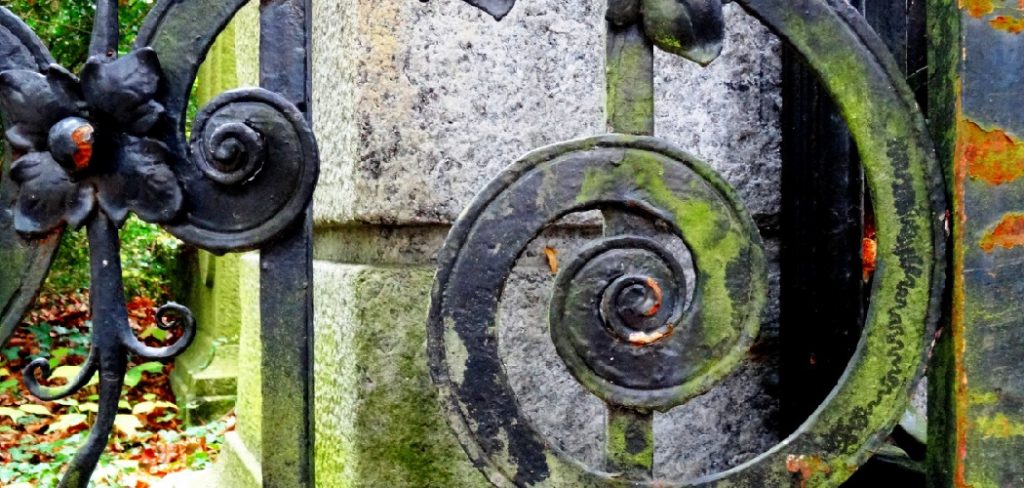
Importance of Painting Wrought Iron
Painting wrought iron serves several crucial functions beyond merely enhancing its aesthetic appeal. First and foremost, it acts as a protective shield against moisture and humidity, which are the primary causes of rust. Rust can cause structural integrity issues, leading to costly repairs or replacements. Moreover, painted wrought iron withstands harsh weather conditions better, reducing the impact of sun exposure, rain, and wind over time.
Additionally, a well-maintained coat of paint can serve as a barrier against dirt and grime, making the iron easier to clean and maintain. Thus, painting wrought iron is an essential maintenance task that extends the life of the metal while keeping it looking its best.
Benefits of Painting Wrought Iron
Painting wrought iron offers a range of benefits that contribute to both the functionality and appearance of the metal. One of the key benefits is protection from rust and corrosion, as a carefully applied coat of paint can act as a strong seal against moisture, reducing the likelihood of rust development. In addition, painting can significantly extend the lifespan of wrought iron by safeguarding it from weather-related damage, such as fading caused by UV exposure or degradation due to heavy rainfall. Beyond protection,
a fresh coat of paint provides an opportunity to customize the color and finish of the wrought iron, allowing you to match it with existing decor or personal taste. This can enhance the overall aesthetic appeal of outdoor spaces, contributing to an inviting and visually pleasing environment. Lastly, painted wrought iron is generally easier to clean and maintain, as dirt and grime are less likely to adhere to smooth, painted surfaces, thereby simplifying upkeep and preserving its beauty over time.
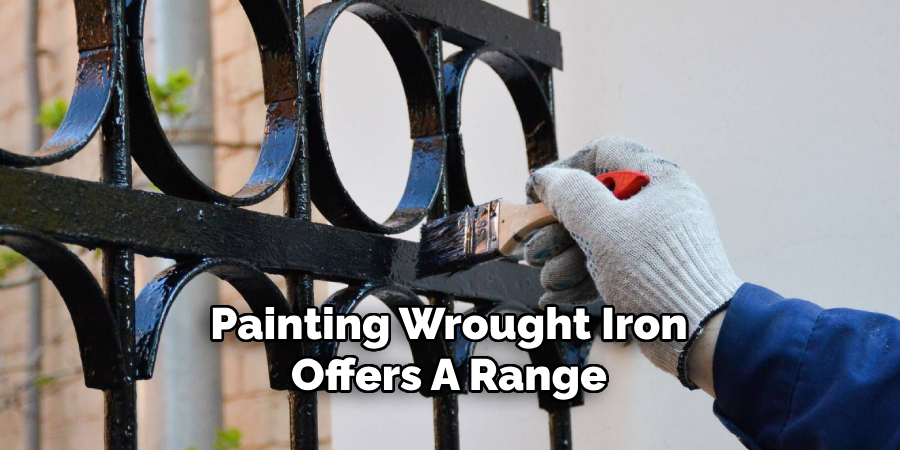
Tools and Materials Needed
Before you begin painting wrought iron, you will need to gather several essential tools and materials to ensure a successful project. Here is a comprehensive list:
- Wire Brush or Sandpaper: To remove any existing rust, paint, or debris from the surface.
- Steel Wool: For further smoothing and preparing the metal.
- Clean Rags or Tack Cloths: To wipe down the wrought iron and remove dust or particles.
- Rust Converter or Primer: A rust-inhibiting primer is crucial for preventing future rust damage and ensuring the paint adheres properly.
- Paint Brushes or Spray Paint Apparatus: Brushes for applying paint manually or spray paint equipment for an even coat.
- Paint Suitable for Metal: Choose a high-quality paint specifically formulated for use on metal surfaces. Consider weather-resistant or outdoor-rated paint for fences and outdoor furniture.
- Drop Cloths or Protective Sheeting: To protect surrounding surfaces from paint splatters.
- Painter’s Tape: To cover any areas that should not be painted.
- Safety Gear: Gloves and safety glasses to protect your hands and eyes during the preparation and painting process.
10 Methods How to Paint Wrought Iron
1. Clean the Surface Thoroughly
The first step in painting wrought iron is to clean the surface thoroughly. Use a wire brush to remove loose dirt, dust, and any old paint. For grease or stubborn grime, wash the wrought iron with a mixture of water and mild detergent, then rinse it with clean water. Allow the iron to dry completely. A clean surface is crucial for the paint to adhere properly and achieve a smooth finish.
2. Remove Rust
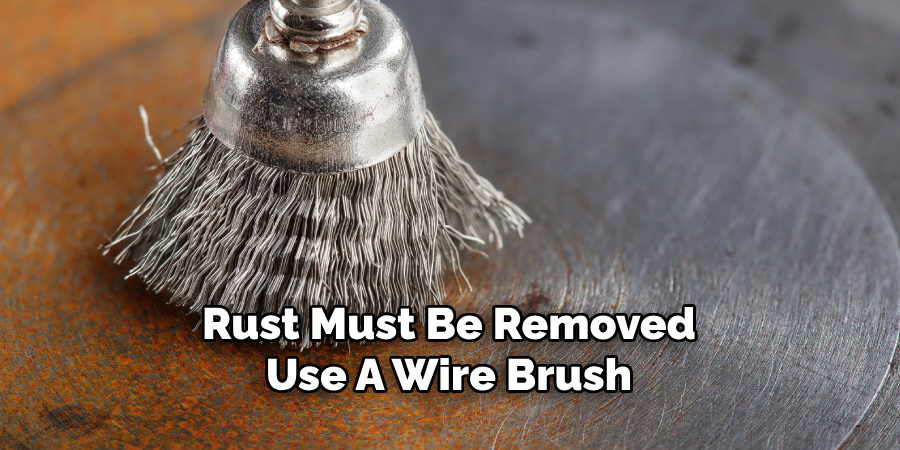
Rust can compromise the adhesion and longevity of the paint, so it must be removed. Use a wire brush, sandpaper, or a power drill with a wire wheel attachment to scrub away rust spots. For hard-to-reach areas, try a rust remover chemical, but ensure to follow the product’s instructions carefully. Removing rust is essential to create a solid foundation for your paint.
3. Sand the Surface for Smoothness
Sanding is an important step that ensures the paint adheres evenly. Use medium-grit sandpaper to smooth out any rough areas and remove remnants of old paint. Pay extra attention to corners and intricate designs, as these areas often have uneven surfaces. Wipe the wrought iron with a damp cloth afterward to remove dust particles. A smooth surface results in a more professional-looking paint job.
4. Apply a Rust Converter (Optional)
If some rust remains after cleaning and sanding, consider applying a rust converter. This chemical treatment stops the oxidation process and transforms rust into a paintable surface. Follow the manufacturer’s instructions carefully, applying it with a brush or spray. Allow it to dry completely before proceeding. A rust converter provides additional protection and prevents future rusting.
5. Use a Metal Primer
Priming is essential to help the paint stick to the wrought iron and to prevent rust. Choose a primer specifically designed for metal surfaces, preferably one with anti-corrosion properties. Apply a thin, even coat using a brush, roller, or spray can, depending on the size and complexity of the piece. Allow the primer to dry as per the manufacturer’s instructions before moving on to painting. A good primer ensures the durability of the final paint job.
6. Choose the Right Paint
Select a high-quality paint specifically formulated for metal surfaces, such as enamel or oil-based paints. These types of paint are durable and provide excellent protection against rust and weather conditions. If the wrought iron will be exposed to the elements, opt for exterior-grade paint. The right paint ensures a long-lasting and aesthetically pleasing finish.
7. Use Proper Painting Tools
The choice of tools can significantly impact the outcome of your project. For intricate designs, use small brushes to reach tight corners and crevices. For larger, flat areas, a foam roller or spray paint can provide a smooth finish. If using spray paint, apply in short, even strokes to avoid drips. Proper tools make the application process easier and more efficient.
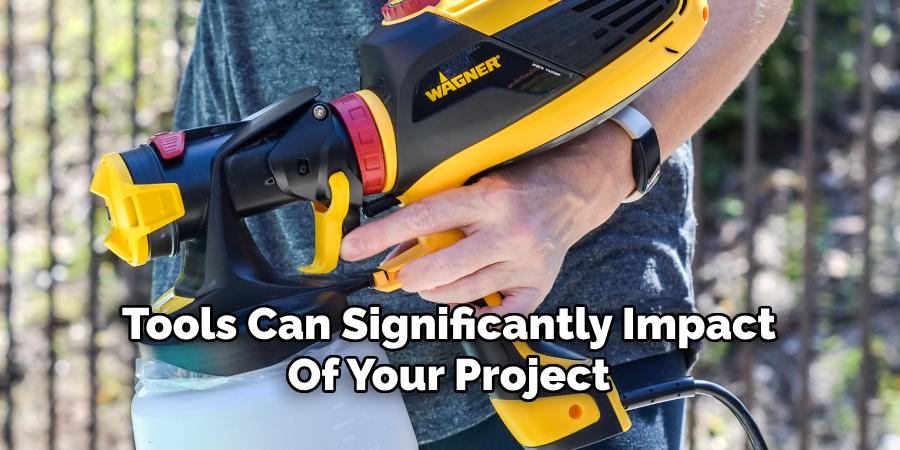
8. Apply Multiple Thin Coats
Instead of applying one thick coat of paint, use multiple thin coats for better coverage and durability. Allow each coat to dry completely before applying the next. Thin coats prevent drips, unevenness, and cracking over time. Usually, two to three coats are sufficient, but follow the paint manufacturer’s guidelines for optimal results.
9. Protect with a Clear Topcoat
Once the paint is dry, apply a clear protective topcoat to seal the surface. A polyurethane or clear enamel topcoat designed for metal works best. This extra layer protects the paint from chipping, fading, and exposure to moisture. Apply the topcoat evenly and allow it to dry thoroughly. A protective finish enhances the longevity of your paint job and gives the wrought iron a polished appearance.
10. Maintain the Wrought Iron Regularly
After painting, regular maintenance is key to preserving the beauty and integrity of the wrought iron. Periodically clean the surface with a soft cloth and mild detergent to remove dirt and debris. Inspect for signs of rust or peeling paint and touch up as needed. Preventative care ensures your painted wrought iron remains vibrant and durable for years to come.
Things to Consider When Painting Wrought Iron
Before embarking on your painting project, there are several crucial factors to keep in mind to ensure a successful outcome. Firstly, consider the weather conditions, especially if you’re painting outdoors. Optimal painting requires dry weather without high humidity or direct sunlight. These conditions help the paint adhere better and dry uniformly. Secondly, evaluate the condition of the wrought iron;
extensive rust or damage might require repair or replacement before painting. Additionally, factor in the time needed for preparation and application, as meticulous surface preparation is pivotal for longevity. Lastly, be mindful of your surroundings and protect nearby surfaces and plants from paint splatters with drop cloths.
Common Mistakes to Avoid
When painting wrought iron, avoiding certain common mistakes can significantly impact the quality and durability of your project. One of the most frequent errors is neglecting proper surface preparation. Skipping cleaning, rust removal, or sanding can lead to poor paint adhesion and a patchy finish. Another common mistake is using the wrong type of paint or primer.
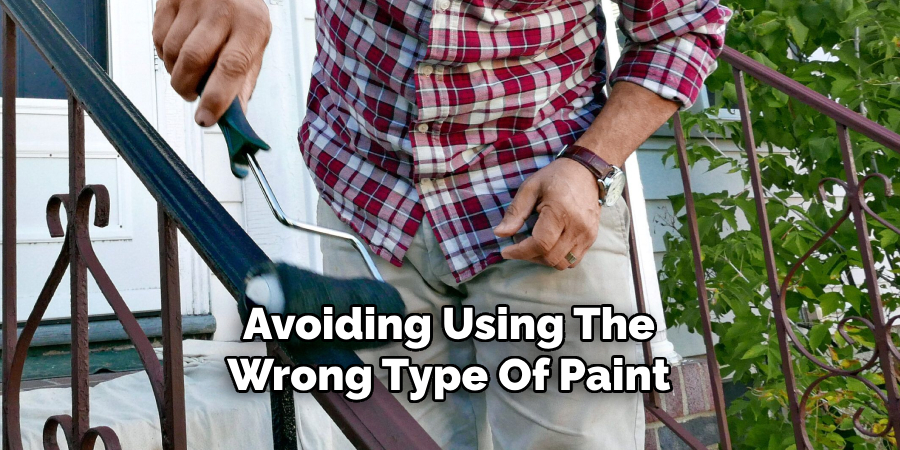
Always select products specifically designed for metal surfaces to ensure maximum protection and longevity. Applying thick coats of paint instead of multiple thin layers can cause drips, uneven drying, and cracking. Additionally, many overlook the importance of weather conditions—painting on humid or rainy days can affect the drying process and result in a subpar finish.
Conclusion
Painting wrought iron can transform it from dull and rusty to vibrant and elegant, with the right techniques ensuring a long-lasting finish. By meticulously following each step—cleaning, sanding, priming, and painting with the appropriate products—you lay the groundwork for a successful project. Equally important is the selection of the right tools and conditions, which further enhances the quality of your work. Thanks for reading, and we hope this has given you some inspiration on how to paint wrought iron!
you can also check it out Repair Cast Iron Pipe Under Slab
Edmund Sumlin is a skilled author for Metal Fixes, bringing 6 years of expertise in crafting a wide range of metal fixtures. With a strong background in metalwork, Edmund’s knowledge spans various types of fixtures, from decorative pieces to functional hardware, blending precision with creativity. His passion for metalworking and design has made him a trusted resource in the industry.
Professional Focus:
- Expert in Metal Fixtures : Edmund aesthetic specializes in creating durable and innovative metal fixtures, offering both appeal and functionality. His work reflects a deep understanding of metalworking techniques and materials.
- Sustainability Advocate : He is dedicated to using sustainable practices, ensuring that every fixture is crafted with eco-friendly methods while maintaining high-quality standards.
In his writing for Metal Fixes, Edmund provides valuable insights into the latest trends, techniques, and practical advice for those passionate about metal fixtures, whether they are professionals or DIY enthusiasts. His focus on combining artistry with engineering helps others discover the true potential of metal in design.


